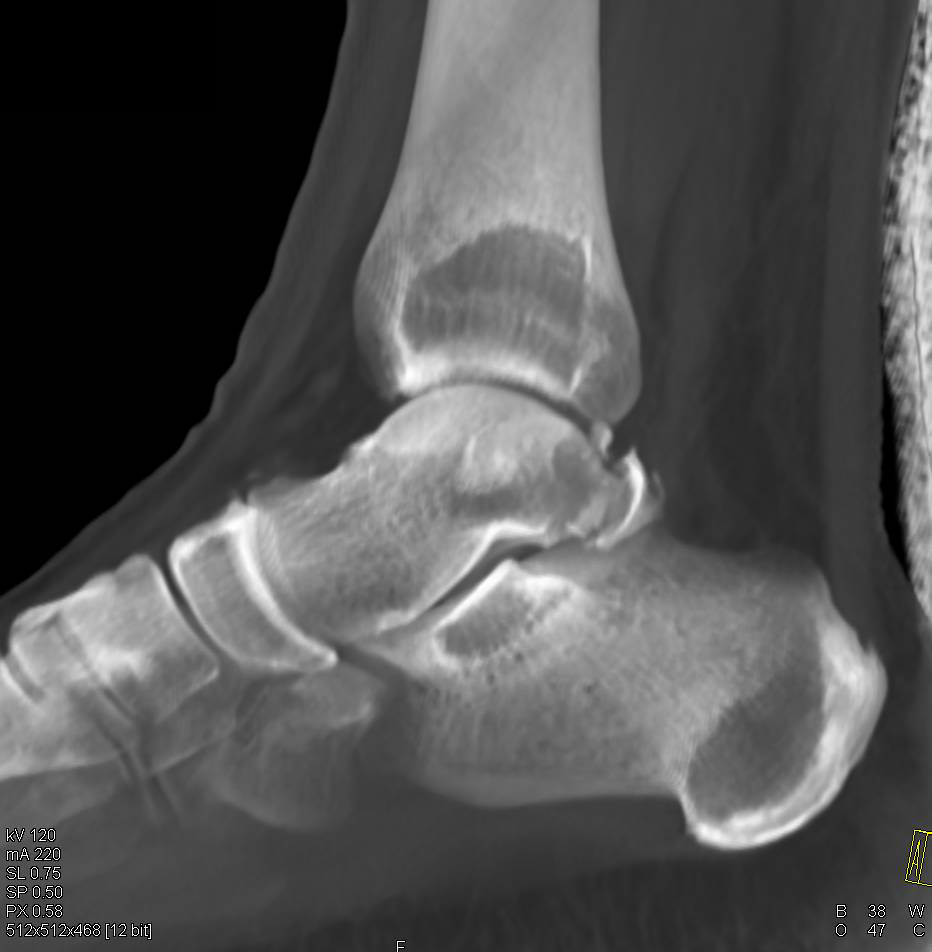

This often improves over time, but you may always notice a difference compared to your other side.īecause talus fractures often occur in high-energy situations such as falls from height, an injury to the cartilage often occurs. Some people experience continued pain, stiffness, and swelling even after their bones heal. Your surgeon will also keep a close eye on your incisions to make sure they are healing properly. As you heal, the doctors will take more x-rays to monitor how your bones are healing. Once the bone heals, you can gradually increase the amount of weight you put on your foot according to your surgeon’s recommendations. If you put too much weight on your foot before the bones heal, the fracture may move. Whether you had surgery or not, you will usually not be allowed to put any weight on your foot. This is to keep your foot still and allow your bones and soft tissues to heal. Post-operative CareĪfter surgery, you will be placed into a splint or a cast.

The surgeon fused the heel bone (calcaneus) to the tibia (shin bone) with a large fusion nail. This is usually temporary for a couple of weeks until the swelling goes down.įigure 6: The patient above was in a car crash and missing part of their talus. These pins are visible outside of your skin, with special bars used to connect the pins to each other. With an external fixator, large pins are inserted into certain bones of your foot and ankle.
#Talus fracture skin
This also helps take the pressure off of the skin and other soft tissues. You may be placed in an external fixator to hold the bones in place. In this case, your surgeon may choose to keep you in a splint until the swelling goes down. If this is the case, it can be difficult to heal the wounds. Sometimes, there is too much swelling around the foot and ankle to make cuts in the skin.
#Talus fracture how to
Your surgeon will determine how to best approach the fracture and realign the bones.

This type of procedure is called "open reduction internal fixation." Surgery is usually done by making two cuts-one on the inside part of the foot and the other on the outside part of the foot. Plates and screws are used to hold them in place. If the bones are shifted out of place, surgery is usually needed to reset the bones. However, if the fracture is in a good alignment and seems stable, you might be treated without surgery using a splint or cast. Most of the time fractures involving the talus require surgery. The CT scan will help your surgeon to decide if surgery is needed and to see if any other bones in the foot are broken. The first step in treatment is to place you in a splint to keep the foot and ankle from moving, which can help with the pain. Talus fractures are typically very painful.
#Talus fracture archive



 0 kommentar(er)
0 kommentar(er)
